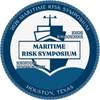
A Port of Oakland official said this week that his organization wants growth in 2019 so customers and communities can benefit. Maritime Director John Driscoll acknowledged, however, that it’s too soon to know how freight markets will respond.
“The container shipping sector starts the year with uncertainty due to global trade conflicts,” Mr. Driscoll told 170 guests at Oakland’s annual State of the Port address yesterday. “Nevertheless, the Port of Oakland remains committed to a growth strategy that provides efficient cargo movement for shippers, jobs for our neighbors and economic stimulus for Oakland.”
Mr. Driscoll pointed out that Oakland’s containerized cargo volume reached an all-time high of 2.55 million 20-foot containers in 2018. It was the second consecutive year of record volume at the Port. Volume in 2018 was 5.2 percent higher than the total in 2017. Import volume increased 5 percent while exports declined 3.5 percent. Oakland saw a 19.7 percent increase in the transport of empty containers being repositioned for future import use.
An ongoing U.S.-China trade war clouds the 2019 freight picture, Mr. Driscoll said. Nevertheless, he added that the Port continues to aggressively implement a 5-year strategy called Growth with Care. The strategy calls for growth across the Port of Oakland’s three business lines: Aviation, Commercial Real Estate and Maritime. Mr. Driscoll pointed out that the strategy emphasizes growth that benefits stakeholders.
The Maritime Director said the Port made significant progress in implementing its year-old strategy during 2018. The highlights included:
•Opening Lineage Cool Port Oakland, a 280,000-square foot, temperature-controlled facility for shipping chilled or frozen cargo;
•Preliminary work on a 460,000-square foot distribution center that would anchor a Seaport Logistics Complex; and
•Completion of a project that doubled the size of Oakland’s TraPac marine terminal.
As the Port took steps to expand its business, it simultaneously addressed the impact on communities, Mr. Driscoll said. He pointed to a jobs agreement that would ensure local hiring when the Seaport Logistics Complex opens in 2020.
Mr. Driscoll said new plans would soon be finalized to minimize the impact of containerized freight hauling in neighboring communities. One would further curb exhaust emissions from diesel-powered equipment operating at the Port. The other would manage truck traffic.



